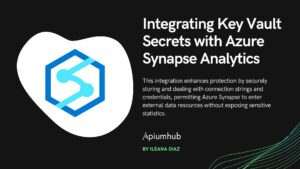Table of Contents
Introduction
Nowadays, most people take it as a fact that the software we use daily is secure, and that is not really representative of the reality we live in in the software industry. A lot of the software on the market today has been written with the priority of being in production as soon as possible and without much consideration for the security aspect. This neglect of code and infrastructure security risks poses a significant threat. A single security vulnerability can lead to a wide variety of problems, including data breaches, financial losses, legal concerns, and a long list of harms to customers and to companies as well.
In this article, we will go through potential security vulnerabilities that can be found in the code and in the infrastructure, specifically focusing on code and infrastructure security risks. By understanding these risks, we can better address the challenges associated with maintaining secure software systems. Additionally, we will explore some metrics that can be useful to keep track of potential security vulnerabilities and mitigate them effectively.
Code and Infrastructure Security Risks
Cross-site scripting refers to a technique used by hackers where malicious code is injected into a system to either redirect users to a malicious site or send sensitive data to a desired location. To address this type of attack, developers must sanitize inputs and make sure to encode any piece of sensitive output data.
Injection attacks are really common in old software, but they are still a common issue nowadays. They consist of the hacker taking advantage of input that is not properly sanitized. If certain data (a script, for example) reaches the database engine and succeeds in being executed, depending on the setup, many actions can be performed to extract data or do other harm.
Poor authentication and session management can lead to unauthorized access to different user roles in a system. It is really important to specify good and clear password policies and other authentication and session security measures, like two-factor authentication and session timeouts. In relation to unauthorized access, it’s important to note that environment misconfigurations are a common source for this kind of issue. Developers must pay attention to how the security is configured in the whole infrastructure of a system in production and development environments, in terms of permissions and roles.
Proper error handling in the code is also a valuable measure to prevent vulnerabilities. It is important to avoid providing extra information about errors that someone with knowledge could use to explore ways to exploit a system.
Data encryption is one of the most important features in the infrastructure of a secure system, developers must guarantee the safety of stored and in transit data with features like SSL/TLS and up-to-date data hashing algorithms.
Apart from the coding aspect of a system, the people in charge of the infrastructure of a system or even a company need to be really careful with network misconfigurations. Firewall breaches and unsecured servers and devices are some of the issues that can be faced by systems, networks, and organizations in general.
Lastly, a piece of more general advice is to keep good track of the dependencies of a system as well as its versioning. It’s really important to keep software updated and to minimize the dependency on third-party code as much as possible. We don’t want other parties to add even more risk to our systems.

Metrics to Keep Track of Code and Infrastructure Security Risks
Let’s enumerate some metrics that can be useful to identify areas of concern, trends, and patterns in the software development process that can lead to potential flaws in our code.
- Time to fix: it is important to build with time a metric that represents the time that will take a team to fix an eventual issue, this way when this happens, actions and priorities can be established accordingly and this helps to properly manage the efforts on a specific issue.
- Number of vulnerabilities: this one is self-explanatory but of much importance. In a big system with many applications, vulnerabilities can proceed from many sources. With this metric, it is possible to identify which applications are more prone to be vulnerable and apply efforts to secure those.
- The severity of Vulnerabilities: the severity of an issue can be of good use to manage correctly the efforts that will be applied to a vulnerability.
- Vulnerability recurrence: if a vulnerability that was supposed to be fixed, but after a supposed fix seems to reappear, it might mean that more effort needs to be taken to address that.
Conclusion
In conclusion, the prevailing assumption that the software we use daily is inherently secure is far from accurate. The software industry often prioritizes speedy production over robust security measures, leaving numerous vulnerabilities in its path.
In an era where data breaches, financial losses, and legal concerns can arise from a single security vulnerability, it is imperative for individuals and companies alike to recognize the importance of software security, including code and infrastructure security risks. By implementing robust security practices, fostering a security-focused culture, and leveraging the insights gained from monitoring relevant metrics, we can strive to create a more secure digital landscape for everyone, mitigating the potential risks posed by code and infrastructure vulnerabilities.
If you are interested in reading more about technology, software development, or artificial intelligence, I suggest you take a look at Apiumhub‘s blog. New and interesting content gets posted every week.
Author
-

iOS Developer working in the software development industry with agile methodologies. Skilled in Swift, objective-C, Python, PostgreSQL, SQL, PHP, and C++. More than 8 years of experience working as iOs Developer, following the best practices.
View all posts









